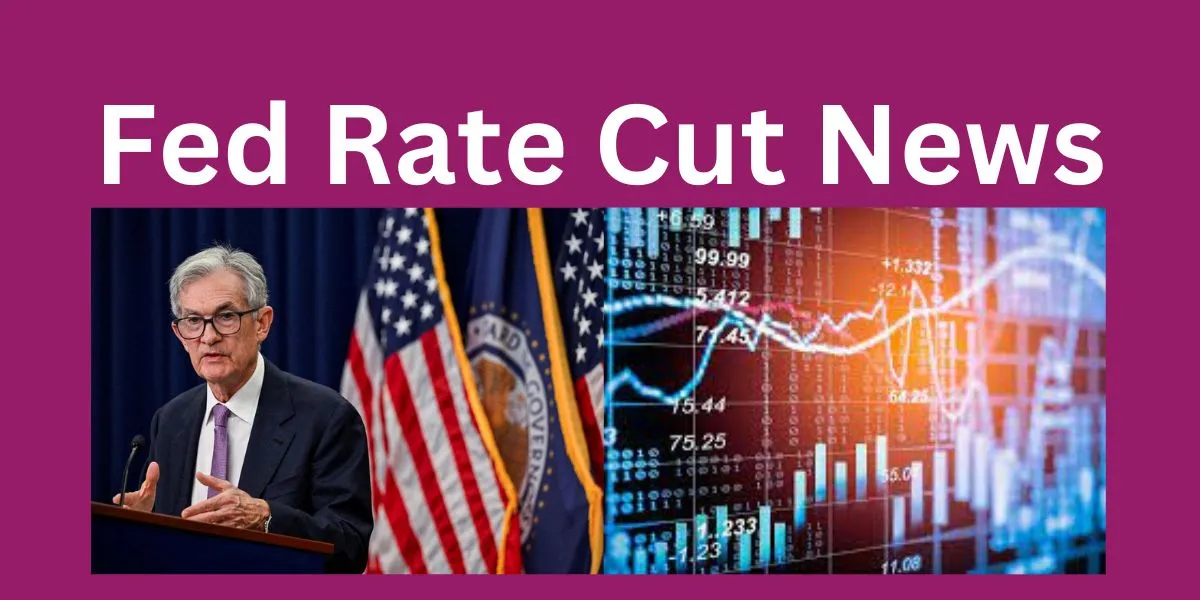The Federal Reserve (or simply, the Fed) often makes headlines with its decisions about interest rates. Recently, there’s been a buzz about a potential Fed rate cut. But what does it mean? How does it impact your daily life, savings, or loans? Let’s break it all down.
What Is a Fed Rate Cut?
Understanding Interest Rates
At its core, a Fed rate cut refers to the Federal Reserve lowering the federal funds rate. This is the rate banks charge each other for overnight loans. It might sound boring, but this rate trickles down and impacts everything from mortgages to credit cards.
Why Does the Fed Cut Rates?
The Fed cuts rates to stimulate the economy. Lower rates make borrowing cheaper, encouraging businesses to invest and consumers to spend. It’s like adding fuel to the economic engine when growth slows down.
Recent Fed Rate Cut News
What’s Happening Now?
The Fed recently announced a potential rate cut to combat slowing economic growth and ease financial pressures. With inflation cooling and economic uncertainty lingering, this move aims to strike a balance.
Why Now?
Global events, fluctuating markets, and consumer spending trends have all contributed to the Fed’s decision-making process. Their goal? Keep the economy steady while avoiding a recession.
How Does a Fed Rate Cut Impact You?
Lower Borrowing Costs
Cheaper Loans and Mortgages
Thinking about buying a home or refinancing? A rate cut could mean lower interest rates on mortgages, saving you thousands over the life of a loan.
Reduced Credit Card Rates
Got a balance on your credit card? Lower rates might slightly reduce your interest charges, putting a little extra cash back in your pocket.
Savings Rates Drop
On the flip side, savings accounts and certificates of deposit (CDs) might earn you less. Banks adjust their rates based on the Fed’s actions, so you may see smaller returns on your savings.
Stock Market Reactions
Boost to Investments
Lower rates often encourage investment in stocks, as bonds and savings accounts become less attractive. If you’re invested in the market, a rate cut could push your portfolio higher.
Volatility Risks
However, market reactions can be unpredictable. Some investors might view a rate cut as a sign of economic weakness, leading to short-term turbulence.
How Businesses React to a Fed Rate Cut
Easier Access to Capital
Lower rates make it cheaper for businesses to borrow money for expansion, hiring, and innovation. This could boost job creation and economic activity.
Pressure on Banks
Banks may see their profit margins shrink because they earn less on loans. This could lead to tighter lending conditions despite the lower rates.
The Broader Economic Impact
Inflation Concerns
The Fed has to balance rate cuts with inflation control. If rates are too low for too long, inflation could spike, reducing the purchasing power of your money.
Currency Fluctuations
Lower rates can weaken the dollar. While this might boost exports by making U.S. goods cheaper abroad, it could also make imports more expensive.
What Should You Do If a Fed Rate Cut Happens?
Review Your Finances
Refinance Loans
If you have high-interest loans, it might be a good time to refinance and lock in lower rates.
Adjust Savings Strategies
Consider diversifying your investments to offset the potential decline in savings account returns.
Stay Calm
Rate cuts are a normal part of economic cycles. Avoid making hasty financial decisions based on headlines alone.
Historical Perspective on Fed Rate Cuts
Previous Rate Cut Examples
The Fed has used rate cuts during past economic slowdowns, such as the 2008 financial crisis and the 2020 COVID-19 pandemic. These measures helped stabilize the economy and promote recovery.
Lessons Learned
History shows that rate cuts can’t solve all problems. They’re a tool—not a cure-all. Structural issues in the economy require broader solutions.
FAQs About Fed Rate Cuts
1. How Often Does the Fed Change Rates?
The Fed meets eight times a year to discuss monetary policy, but rate changes occur only when necessary.
2. Can a Rate Cut Hurt the Economy?
In rare cases, yes. Prolonged low rates can lead to inflation or asset bubbles, creating future economic problems.
3. Who Benefits the Most from a Fed Rate Cut?
Borrowers, especially those with variable-rate loans, tend to benefit the most. Savers, however, may see lower returns.
4. Will My Mortgage Rate Drop Immediately After a Fed Rate Cut?
Not necessarily. Mortgage rates depend on many factors, including the bond market. A Fed rate cut can influence rates but doesn’t directly set them.
5. Should I Invest More in Stocks After a Rate Cut?
It depends on your financial goals and risk tolerance. Lower rates can boost stocks, but market movements are never guaranteed.
Conclusion
Fed rate cuts may sound like dry financial jargon, but their ripple effects reach into your wallet, investments, and beyond. Whether you’re a borrower, saver, or investor, understanding these changes can help you make smarter financial choices. The next time you hear about a Fed rate cut, you’ll know exactly what it means—and how to navigate it.










